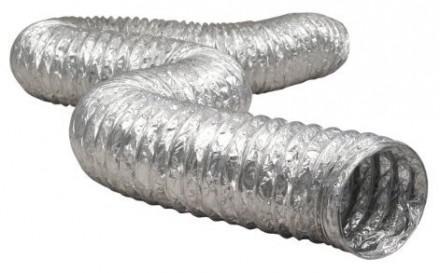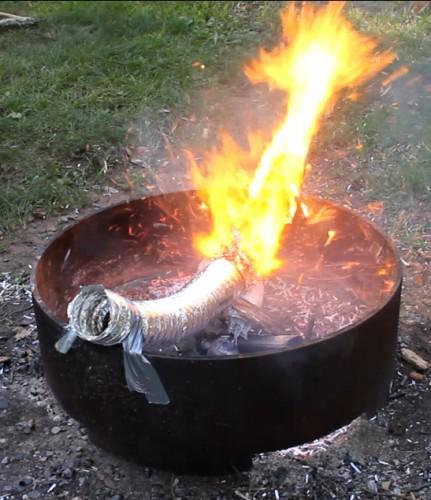Last week I blogged about clothes dryer ducts, and this week I'm going to follow up with information on dryer transition ducts. As I mentioned last week, a dryer transition duct is the flexible material that can be used to transition between the dryer and the duct. Transition ducts should be used sparingly, stretched tight, not smashed, and replaced periodically. They're allowed by the Minnesota State Mechanical Code, but they can't be any longer than 8', and they need to be listed and labeled for the application. The key word is listed. If a dryer transition duct is listed, you'll find the "UL" logo somewhere on the package or product.
Today I'll discuss the three most common materials used for dryer transition ducts, and I'll cover some basic rules for keeping your dryer transition duct safe.
Plastic Ducts
Plastic dryer transition ducts are a potential fire hazard. They're never UL listed, they can get clogged with lint, and they'll burn. If you have one of these, replace it. I looked for one of these at Home Depot and Menards, but I couldn't find one. Good. I still find plenty of them while inspecting houses though.

I tried lighting some paper inside one of these plastic ducts on fire to see how fast it would burn through, and the plastic itself actually caught on fire.
Foil Ducts
Foil dryer transition ducts are typically UL Listed, and they're readily available at any home improvement store. While these products are allowed by code, I've heard that many municipal inspectors won't allow them, and most manufacturers of clothes dryers don't recommend them either.

I tried burning one of the UL Listed foil ducts by filling it up with shredded paper, then lighting the paper. Once the paper caught fire, I accelerated the burn by aiming the blower end of a wet/dry vac at the tube. Some people claim that these foil ducts are flammable, but that's not true; there are two versions of the foil dryer transition ducts - a listed and a non-listed version. That's the listed version shown in the photo below. After heavy white smoke started pouring out the end, it took about 10 seconds for the flames to rip through the side.

Semi-Rigid Metal Ducts
Semi-rigid metal dryer transition ducts are available anywhere dryer duct materials are sold, but it's almost impossible to find a UL Listed version of this. The strange thing is that these semi-rigid ducts seem to be universally accepted by building code officials, and they're recommended by clothes dryer manufacturers. Everyone seems to like these, but they have their drawbacks: they puncture easily, they crush easily, they unravel easily, and they have very sharp edges. I repeat, very sharp edges.

